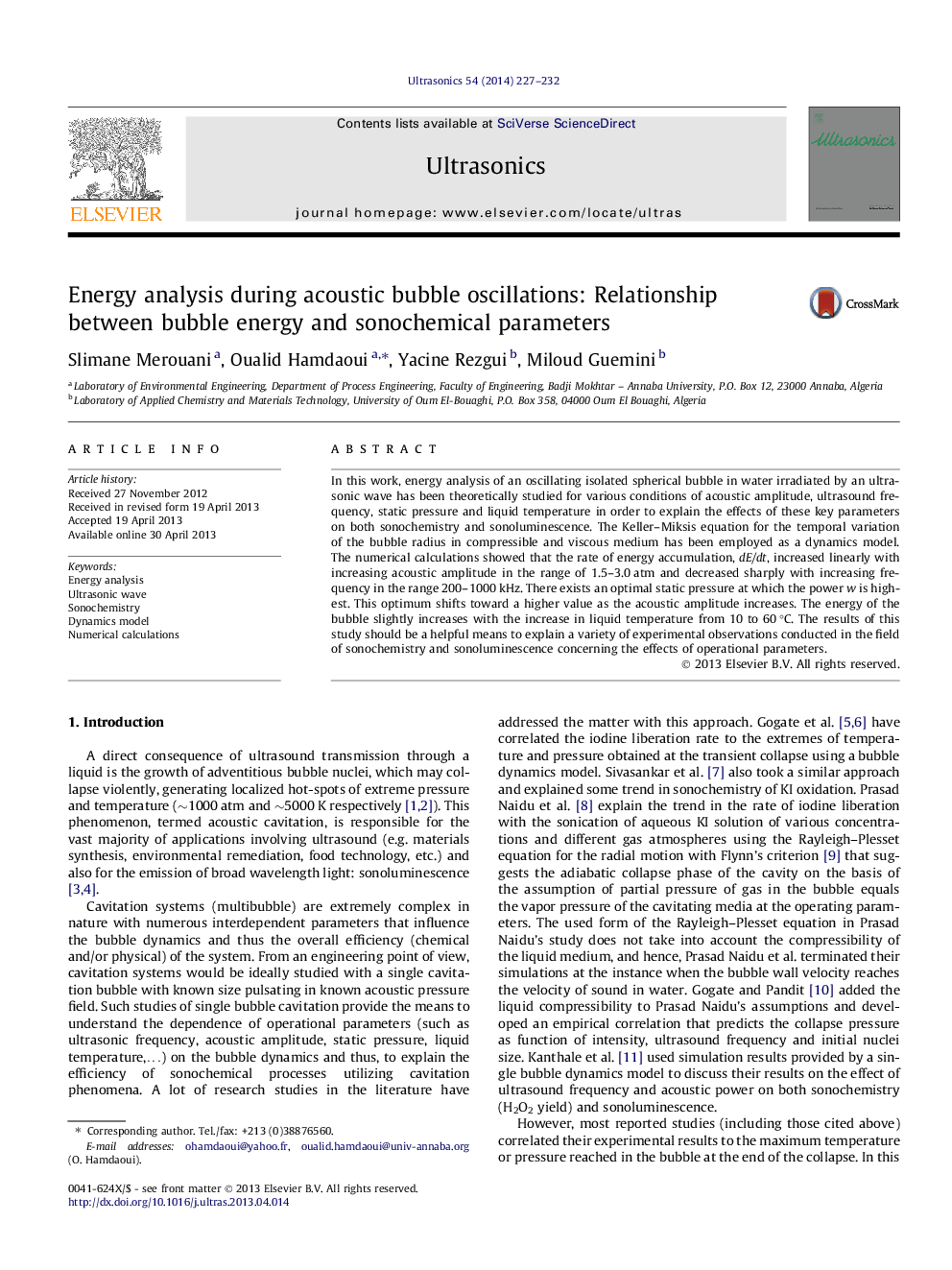| Article ID | Journal | Published Year | Pages | File Type |
|---|---|---|---|---|
| 1758979 | Ultrasonics | 2014 | 6 Pages |
•Energy analysis of an oscillating isolated spherical bubble in water irradiated by an ultrasonic wave was investigated.•The rate of energy accumulation increased linearly with increasing acoustic amplitude.•The rate of energy accumulation decreased sharply with increasing frequency in the range 200–1000 kHz.•The energy of the bubble slightly increased with the increase in liquid temperature from 10 to 60 °C.
In this work, energy analysis of an oscillating isolated spherical bubble in water irradiated by an ultrasonic wave has been theoretically studied for various conditions of acoustic amplitude, ultrasound frequency, static pressure and liquid temperature in order to explain the effects of these key parameters on both sonochemistry and sonoluminescence. The Keller–Miksis equation for the temporal variation of the bubble radius in compressible and viscous medium has been employed as a dynamics model. The numerical calculations showed that the rate of energy accumulation, dE/dt, increased linearly with increasing acoustic amplitude in the range of 1.5–3.0 atm and decreased sharply with increasing frequency in the range 200–1000 kHz. There exists an optimal static pressure at which the power w is highest. This optimum shifts toward a higher value as the acoustic amplitude increases. The energy of the bubble slightly increases with the increase in liquid temperature from 10 to 60 °C. The results of this study should be a helpful means to explain a variety of experimental observations conducted in the field of sonochemistry and sonoluminescence concerning the effects of operational parameters.
